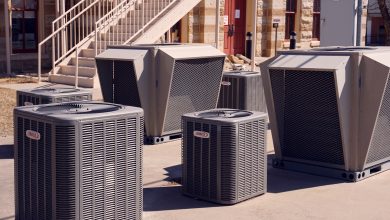A common problem many people have both in the summer and in the winter is air coming out of the HVAC vents at seemingly inadequate temperatures. Whether you’re trying to cool your home in the summer or warm it up in the winter, it’s often hard to gauge if the air blowing out of your vents is the right temperature.
So, how can we know what temperature should come out of AC vents? How cold should the air be blowing out of the vents in the summer and how warm in the winter?
Unfortunately, there aren’t just one or two concrete numbers to watch for as it depends on what temperature you’ve set the thermostat, what’s the square footage of your home, how your HVAC system is set up, etc.
Fortunately, there’s a certain range called Delta T by professionals which indicates what’s the right temperature in every situation.
What is Delta T?
Delta T is the temperature difference between the supply air (the cooled or warmed air entering your home) and the return air (the air returning back into your AC/HVAC to be cooled/heated).
Whether you’re cooling or heating your home, Delta T should always be somewhere between 16°–22° F according to most professionals (14°–20° F according to others).
So, if you’re heating your home in the winter and you’ve set your thermostat to 77o F, the air coming out of your vents should be between 93o and 99o F. On the other hand, if you’re cooling your home in the summer and you’ve set your thermostat to 77o F, the air coming out of your vents should be between 61o and 55o F.
So, at what temperature should air be coming out of the vent when cooling?
16°–22° F cooler than the air temperature going back into the vents.
And at what temperature should air be coming out of the vent when heating?
16°–22° F warmer than the air temperature going back into the vents.
How to check the Delta T temperature?
The process is quick and easy, all you’ll need is a thermometer.
- Put the thermometer at the return vent of your HVAC system to check what’s the temperature of the air going into it. With an AC you can just check the room temperature away from the AC’s airflow.
- Check the supply vent(s) of your HVAC or AC. If there is more than one, check all of them and then find the average temperature of them all (add the numbers and divide them by the number of supply vents).
- Lastly, subtract the return temperature from the supply temperature and you’ll get the Delta T temperature. If it’s below 16° and 22° F, everything is working In order. If not, you’d do well to check the air filters, evaporation coil, fan speed, Freon levels, the compressor valve, the ductwork, or for any possible leaks. Any one of those can be causing the problem. Or, just call a professional.





